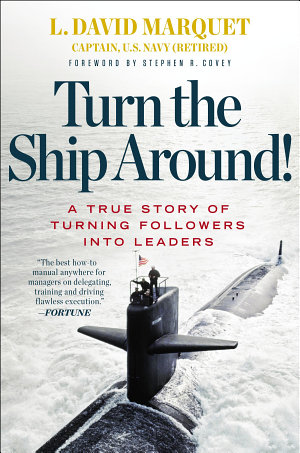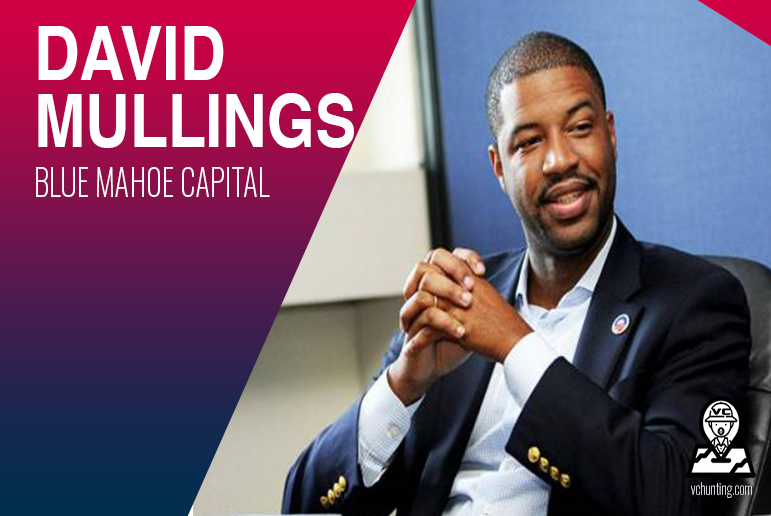Turn The Ship Around – A View Into Agile Leadership
Note: This post is adapted from some posts that I originally created on Adobe’s blog while I was an employee there.
I recently finished reading former U.S. Navy Submarine Commander David Marquet’s book “Turn the Ship Around”. It is a powerful story of learning what leadership means and the struggles Marquet had putting it into place in his role as commander of the Los Angeles-class fast attack submarine USS Santa Fe (SSN 763).

SUBIC BAY, Philippines (Aug. 2, 2011) A pair of tug boats pull the Los Angeles-class fast attack submarine USS Santa Fe (SSN 763) away from the submarine tender USS Frank Cable (AS 40) after a port visit to Subic Bay, Philippines. Frank Cable conducts maintenance and support of submarines and surface vessels deployed in the U.S. 7th Fleet area of responsibility. (U.S. Navy photo by Mass Communication Specialist 1st Class Ricardo Danan/Released)
Marquet proposes that Leadership should be defined as:
Embedding the capacity for greatness in the people and practices of an organization, and decoupling it from the personality of the leader.
The paradox is that more traditional leadership creates more unthinking followership; less top-down leadership creates more engaged leadership – at every level of an organization.
Leadership and productivity guru Stephen Covey took a tour of Marquet’s submarine in 2000, a couple of years into Marquet’s command, and reported that it was the most empowered organization he’d ever experienced, of any type, and wrote more about it in his book “The 8th Habit”.
The hyper-quick summary of Marquet’s approach involves three pillars: Control, Competence, and Clarity. These form the basis for what he calls “Leader-Leader” behavior, as opposed to the much more common “Leader-Follower” culture found in most organizations.
Marquet talks about shifting the psychological ownership of problems and solutions using a simple change in language. I’ll attempt to illustrate the evolution of leadership behavior through a series of conversations:
Traditional leader-follower pattern:
Captain: “Submerge the ship”
Subordinate: “Submerge the ship, aye”
To push Control down in the organization, Marquet began using the following speech pattern:
Captain: “What do you think we should do?”
Subordinate: “I think we should submerge the ship, sir”
Captain: “Then tell me you intend to do that”
Subordinate: “Captain, I intend to submerge the ship”
Captain: “Very well”
Giving control without an assurance of competence could lead to disaster on a nuclear submarine, and so over time, the pattern evolved to include an assurance of technical Competence, becoming:
Subordinate: “Captain, I intend to submerge the ship.”
Captain: “What do you think I’m concerned about?”
Subordinate: “You’re probably concerned about whether it’s safe to do so”
Captain: “Then convince me it’s safe”
Subordinate: “Captain, I intend to submerge the ship. All crew are below decks, the hatches are shut, the ship is rigged for dive, and we’ve checked the bottom depth.”
Captain: “Very Well”
The final evolution of the language added the third pillar – Clarity of mission, becoming:
Subordinate: “Captain, I intend to submerge the ship. All crew are below decks, the hatches are shut, the ship is rigged for dive, and we’ve checked the bottom depth.”
Captain: “Is it the right thing to do?”
Subordinate: “Yes sir, our mission requires that we submerge now in order to (classified reason (-: ) ”
Captain: “Very Well”
The book is highly engaging and I found it to be a fascinating model of leadership extremely well-tuned to the needs of leading complex organizations in the knowledge work era.
What does this have to do with Agile?

Empowerment is a core concept of agility, and specifically the scrum framework, but it is something that can be a major challenge to get working well in organizations without decentralized control, insurance of competency, and clarity of mission. Marquet’s approach provides a simple pattern to follow in empowering teams.
Interestingly, empowerment is a term that Marquet dislikes, since it implies that individuals can only be “powerful” once it has been granted by a leader. His claim, and one that I agree with, is that all human beings are naturally powerful, they don’t need to be “empowered”. Rather, leaders simply need to remove cultural norms and processes that are meant to exert control, resulting in people tuning out and becoming disengaged. When the right leadership behaviors are in place, people will naturally bring their whole selves to their jobs. From a lean standpoint, such controls can be viewed as creating waste – people that show up and go through the motions, rather than devoting their creativity and energy to their jobs, and the lean leader’s job is to remove waste from the system.
Empowered Product Owners & Teams
Scrum is fundamentally based on the idea that a Product Owner is the single accountable person for setting the priorities of the team(s). Leaders can ensure that Product Owners have this accountability by using the “Intend To” language.
Product Owner: VP, I intend to move this new feature to the top of the Product Backlog and deprioritize this other feature that was in our original plan. Customer validation tests indicate that the new feature would increase retention of existing users by around 4%, more than any other feature we’ve tested, aligning with our highest priority goal for this quarter of increasing existing subscriber retention rates. The team has done some high level scoping and forecast that this feature would be completed within two sprints, a similar size to the feature that we’ll be cutting.
VP: Very Well
The leader gets what they really want: an assurance that the Product Owner is aware of the business concerns and have done their due diligence to address those concerns. The Product Owner gets what they want – mentoring to understand what business leaders are most concerned about (a great career development aspect of this ap proach), with the autonomy to meet the business need however they see fit.
proach), with the autonomy to meet the business need however they see fit.
Agile Leadership is the missing link for many organizations
Agile has had a major impact on some organization’s capability to balance delighting customers, keeping people engaged at work, and delivering great business results. It has, however, struggled to make an impact in many organizations where Cargo Cult Scrum, “scrum-but” and other half-hearted implementations of agile are the norm. The difference is in the leadership of these organizations. Where agile is seen as the latest trend, something the developers do, or a bandaid to fix some specific annoyance, agile will have a marginal (if sometimes still improved) result. Where agile is viewed as a mindset for both teams and leaders, it can have a profound impact. Marquet’s book provides some simple rules that leaders can apply to start seeing that bigger impact of agile at the organizational level.
You can find his book and other info on his site: http://davidmarquet.com/
Connection to Dan Pink’s Drive
Friend and agile coach Rob Myers (@agilecoach) added,
These align nicely with Dan Pink’s autonomy (decentralized control), mastery (technical competence), and purpose (clarity of the mission). Thanks for the excellent analysis! I’ll be sharing this.
The funny thing is, I’ve probably watched the RSAnimate video of Dan Pink(@DanielPink – check it out below – well worth the time) more than 100 times since I often show it in training classes, and I’ve read the book (Drive) twice. I’m a big fan of Dan’s podcast (Office Hours) and his other books, and I still didn’t make that link! Thanks to Rob for connecting the dots for me between Turn the Ship Around (experience) and Drive (behavioral economics/neuroscience).
Here’s the Dan Pink Ted talk animated, just in case you haven’t seen it yet!







It would be valuable to mention additional benefits that result when Daniel Pink’s motivators overlap: discipline (Purpose & Mastery), dedication (Mastery & Autonomy), desire (Autonomy & Purpose), and drive (all three).
Daniel Pink also suggests “Pay people enough so that they’re not thinking about money and they are thinking about the work.” In order to achieve that condition, I would like to suggest Chip Conley’s “Peak: How Great Companies Get Their Mojo From Maslow” and the need for a broader focus on the combination of three Maslow’s like pyramids: Employee, Customer and Investors.
Also, please read Lars Kolind’s “The Second Cycle: Winning the War Against Bureaucracy” and “Unboss” for even greater motivation.
David Marquet’s courage to break the rules wisely, his book and his message to add value to and through people are “top gun”.